By Meghan Ellis
A dangerous zealot rushes towards a solitary figure, chanting a hymn of the stars. Nearby, a skeleton waits to join the fray, wearing clothes of an unfamiliar land. The sky above marches on in disinterest as an icy wind blows over the battlefield, while a forbidding keep dominates the landscape.
Welcome to Grim Coast, Engraved.
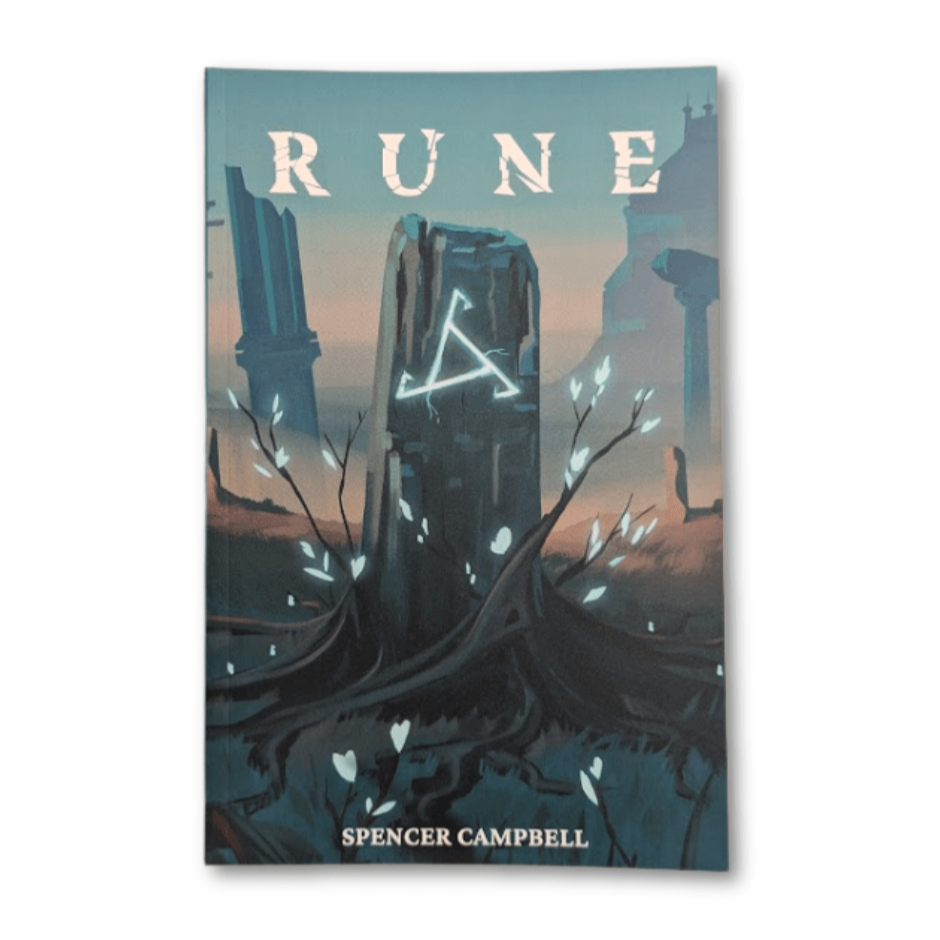
RUNE, developed by Spencer Campbell of Gila RPGs, is a solo RPG where players take on the role of an Engraved, accursed wanderers searching for power in the fractured realms of Obron. As deathless creatures, these travelers are bound to resurrect over and over again in their search for the runes that can control their fate.
Developed as a love letter to the soulslike genre popularised by FromSoftware’s Dark Souls, Bloodborne and Elden Ring videogames, RUNE is a similarly oppressive experience that splits play into two distinct phases of exploration and combat. Through traversing a map and uncovering the fights and secrets within each location, the player will gain enough stamina and lore to defeat the realm’s terrifying Rune Lord.
In short, RUNE is player versus world, literally.
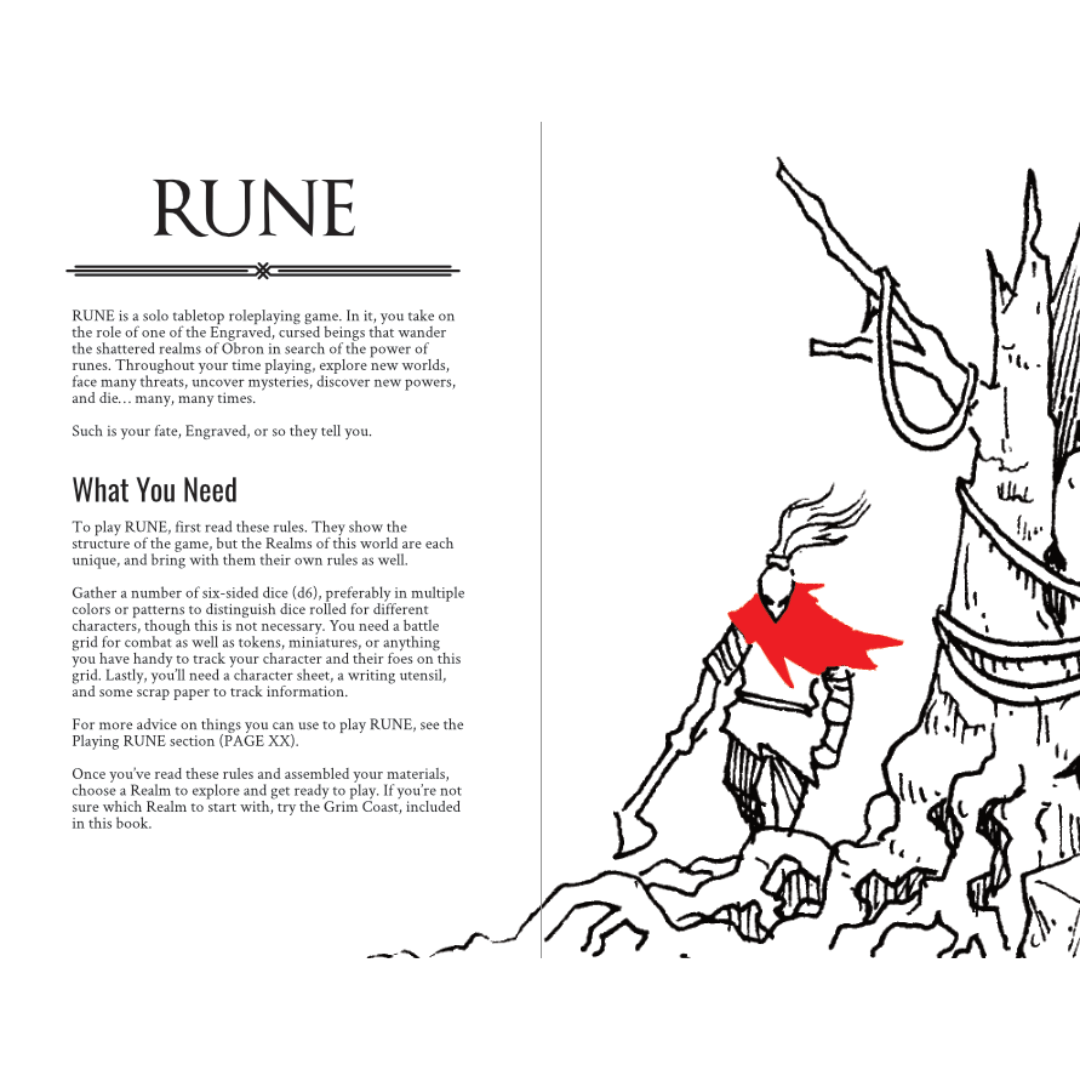
Prepare to die
I’ll be the first to admit that I am hopeless at soulslikes. In a videogame, the format of learning an encounter by heart and then executing the solution in a well-practised dance is not a skill I possess. But the genre’s atmosphere is undeniably attractive: a lost soul wandering a ruined realm, equipped with nothing but their wits, a weapon, and the vaguest sense of a driving force. For anyone who has ever admired Guts from Berserk or fancied exploring Lovecraft’s Nameless City, soulslike games package this sense of hopeless horror into an interactive journey.
RUNE manages to distill this interactivity into a low tech format, replacing complex stat systems and button inputs to a simple gameplay loop of map crawling and dice rolls. Players will navigate a series of realms within the land of Obron until they find the location’s corresponding rune and move on with their quest. The game is part narrative sleuthing and part combat puzzle, with an emergent story pieced together by finding hidden lore.
Famed for their difficulty, soulslike games delight in killing players over and over again, and RUNE doesn’t shy away from this core mechanic. The player will likely face a foe that seems insurmountable at first - a particular Necromancer certainly minced me during our initial encounter - but after gaining better equipment and learning their moveset, these enemies eventually become another trophy earned on the search for power. The cycle is addictive, the defeats satisfying, and the inevitable death penalties are varied enough to make it feel like a challenge rather than a setback.
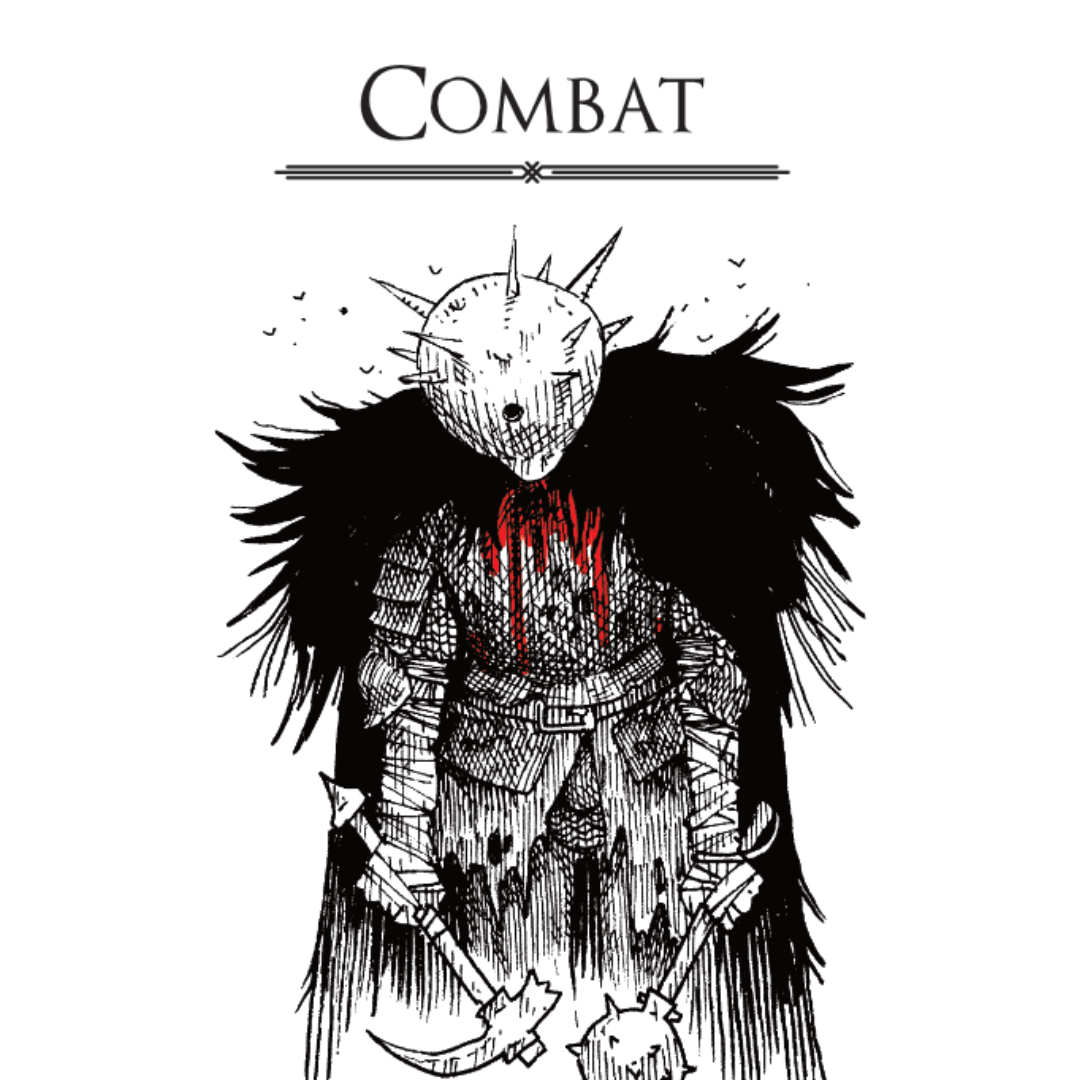
Fight or flight
RUNE’s combat is easily its best feature. Fights take place on a 4x4 grid where enemies and the Engraved move orthogonally, a claustrophobic space that truly captures the game’s seemingly hopeless setting. Enemies are piled onto the map - fights generally take place with five or so combatants - and there is not a lot of space to stay out of reach, highlighting the importance of tactical positioning. Each encounter runs through movement, damage, and alternate actions, with harm resolving at the end.
Actions are limited by the results of dice rolls in a neat blend of tactics and luck. The player rolls from their pool of stamina dice and then decides which number to assign to an action, usually movement, attacking or both. Enemies operate in the same way, telegraphing their intention based on the dice roll in a way that hopefully informs player strategy. For anyone who’s ever played a soulslike, this is the paper equivalent of an attack animation so obvious it would be daft not to know what to do next (guilty).
The phases are fast paced and the rules are rarely ambiguous, leading to a cat-and-mouse scenario where the Engraved has to stay within attacking distance while taking as little damage as possible.
For example, early in my playthrough I encountered a pack of Zealots accompanied by a lone Writher, a bone-encrusted entity that placed spike pods on tiles adjacent to it on a dice roll of 1-5. These spike pods harmed the Engraved when they entered or started their turn in that space, meaning I took retaliatory damage while in melee range. As damage happens simultaneously, this means I was forced to retreat to the edge of the field to hope for the best.
Lesson learned: RUNE is ruthless about making sure players are using the right weapon for the current fight. Though the penalties are severe, fleeing and returning with better suited equipment can be the difference between life and… well, life again, since the Engraved returns to their Sigil upon death.
This combat is easy to pick up and hard to master, and I think this is where RUNE shines. Fighting becomes second nature within a few rounds. In games like Dark Souls or Bloodborne the combat is far more trial and error, which Campbell has omitted in favour of setting the difficulty of each encounter much higher in the first place, akin to a puzzle. This approach fits the medium; players have time to be tactical between each combat stage, unlike in a videogame where reaction speed is a critical factor. Add in the randomness of dice rolls to determine which actions players and enemies can take, and the result is a series of relentless fights to the death.
Unmoored in a dangerous world
In keeping with its inspirations RUNE steers clear of an involved story, instead encouraging the player to delve into temples, keeps and laboratories to figure out the lay of the land. Encounters with NPCs are rare and almost always hostile (except for my buddy the Boatman).
I played through the Grim Coast, the first realm included within the rulebook, and found it to be a succinct starting point for the emergent narrative Campbell wants to tell. There’s an expanded Realms Atlas which details six additional realms for players to explore, all of which provide their own spin on the game’s core exploration mechanic. Blessedly there’s no poison swamp, but each of the realms have plenty of horrors familiar to fans - looking at you, fell beasts - and the Rune Lords are definitely inspired by iconic dark fantasy entities.
This is where the game struggles slightly. In a genre full of beautifully presented games, RUNE stands out for its simplistic, sparsely decorated rulebook. Artist Charlie Ferguson-Avery has sketched out evocative linework for the main landmarks and the Engraved, but I’d have liked to see more of his work throughout the book. What does the Grim Coast’s Ruined King look like? What shape are the constellations in the Church of Stars?
Visuals do a lot to help tell a story. Imagine if we didn’t know what the Lord Souls looked like in Dark Souls, or if we had to envision Cthulhu for ourselves. In RUNE, enemies are almost entirely left to the imagination, which is a shame in a genre rich with the shape of monsters. It’s printer friendly, sure, but at the expense of the narrative.
I played with tokens, but I’d recommend cracking out miniatures from other games and using them to populate the map in lieu of predefined artwork. Got a few skeletons in your closet?
Time marches on
Don’t worry though; the exploration phase, while in need of some more worldbuilding visuals, is in no way underdeveloped. I particularly like how the world state advances: as seen in Blades in the Dark, each realm has an associated timer which changes what trials the Engraved will face during their travels.
In the Grim Coast this is a simple Day / Night clock, but other realms feature creative timers such as increasingly powerful rituals, map erosion and unstoppable boss countdowns. These really help to flesh out the worldbuilding and ensure that exploration is varied from session to session. Players will have to strategise about whether to visit a location at a particular time of day, or if they can risk a dangerous path in foul weather.
This adds urgency to the game beyond acquiring the rune and moving on, offering an opportunity for solo roleplaying as the Engraved overcomes new trials presented to them by the unrelenting march of time. We’ve seen this in several other RPGs, but Campbell has excelled at making each timer feel unique to the seven official realms available.
Seek runes, bind fate
RUNE is a puzzle, a tactical combat simulator, and a map crawler all in one. It’s a tense and lonely experience, a palate cleanser from in-depth narrative RPGs. Though this vague sense of storytelling might sound intimidating to players who prefer guidance, the gripping combat will get its hooks in sharpish, and it won’t let go until the Rune Lord goes down.
For me, it helped to frame RUNE not as a solo journaling experience but as more of a dungeon delver, where the journey was more important than the motivation. Obron is a shattered place haunted by dead gods and deathless wanderers; what is a backstory in the face of such horror?
Simply rise, die, rise again, and enjoy the high stakes.
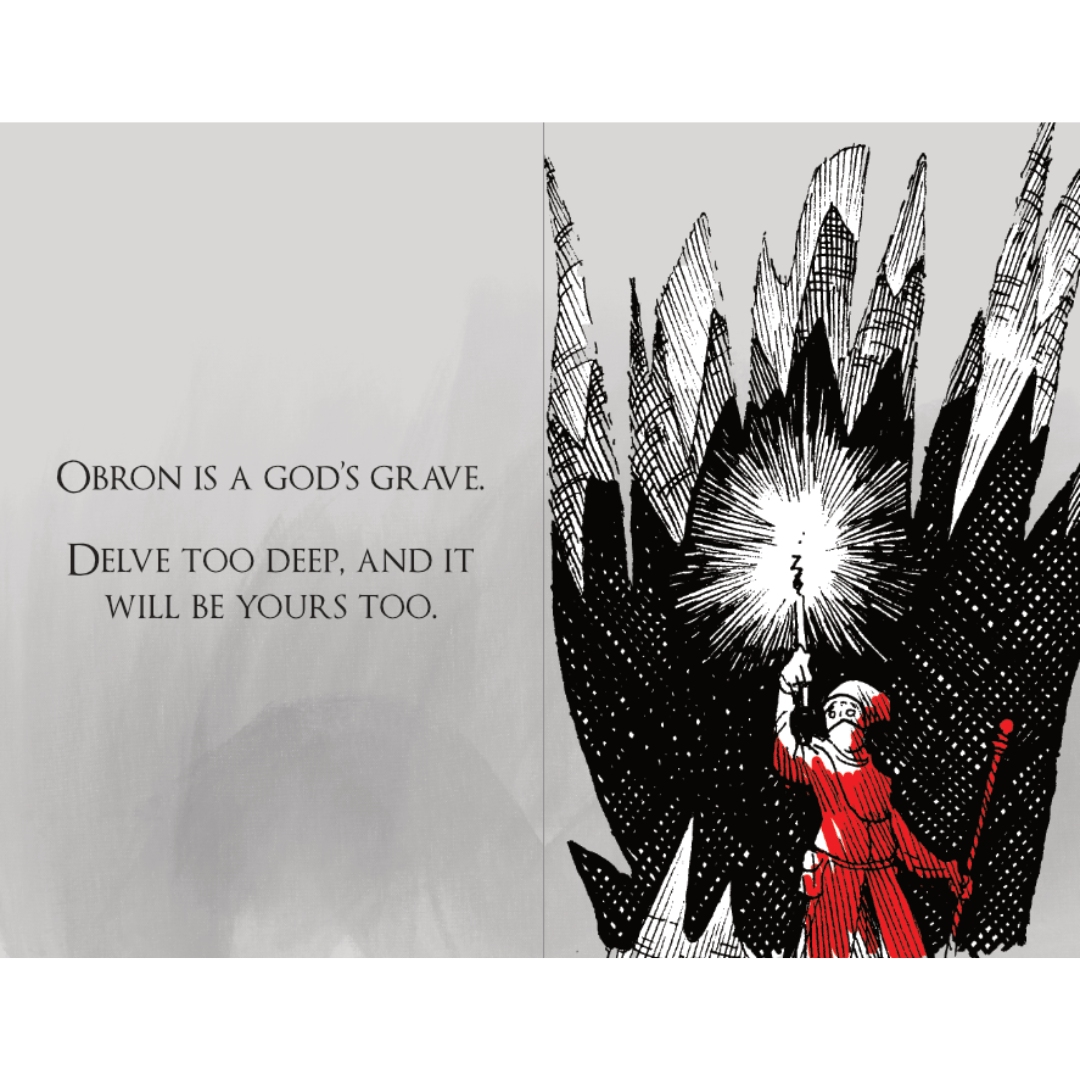
Meghan Ellis is a Glasgow-based journalist covering internet culture, anime, gaming, and SFF. She’s appeared in IGN, Kotaku, All the Anime and on the BBC, where she told the general public to go to Comic-Con. She participates in game jams over on https://meghan0n.itch.io/ as a jack-of-all-trades artist and writer. Read more over on https://www.meghanon.co.uk/.
© 2025 Tabletop Bookshelf


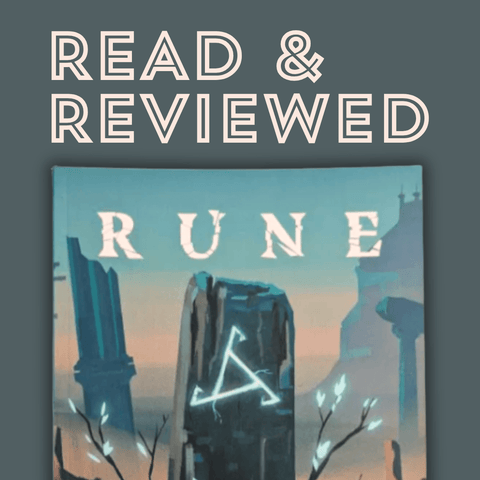

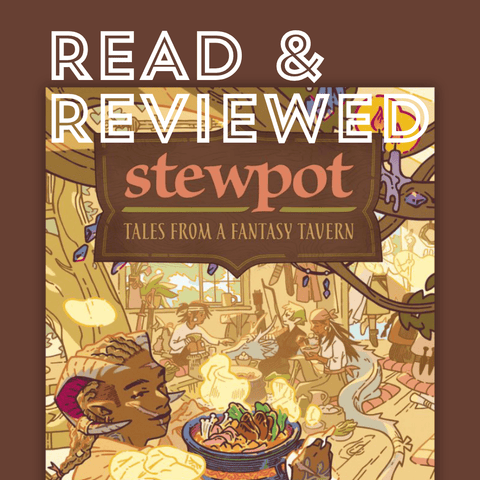
Comments (0)
There are no comments for this article. Be the first one to leave a message!